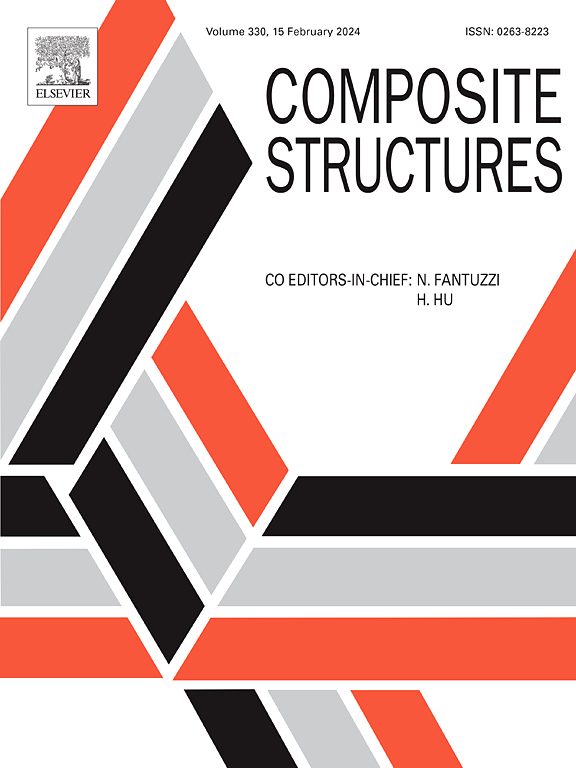A variable stiffness structure with an embedded periodic metallic mesh
IF 6.3
2区 材料科学
Q1 MATERIALS SCIENCE, COMPOSITES
引用次数: 0
Abstract
This study investigates the performance of a multi-layered variable stiffness structure with an embedded metallic mesh as a heating source. A combined experimental and numerical approach was employed to assess the heating efficiency, temperature distribution, and stiffness modulation. The embedded metallic mesh, with seamless junctions and an 11 % fill factor, achieved uniform temperature distribution, heating rate of 6.4 °C/sec and induced a 30 % reduction in stiffness at an applied current of 5 A. However, localised overheating led to matrix damage in the form of thermal hotspots. To mitigate this, a modulated current input was introduced using a 50 % duty cycle square pulse at frequencies ranging from 1 Hz to 10 Hz. This modulation successfully reduced peak hotspot temperatures by 30 %, prevented matrix degradation, and improved initial system response time while maintaining the desired temperature profile. Furthermore, numerical simulations were conducted to evaluate the impact of various metallic mesh topologies, each maintaining a constant fill factor. The results indicate that topology plays a significant role in heating efficiency, particularly at lower current densities. These findings offer critical insights into the design of advanced variable stiffness materials with large stiffness variation and fast response dynamics.
求助全文
约1分钟内获得全文
求助全文
来源期刊

Composite Structures
工程技术-材料科学:复合
CiteScore
12.00
自引率
12.70%
发文量
1246
审稿时长
78 days
期刊介绍:
The past few decades have seen outstanding advances in the use of composite materials in structural applications. There can be little doubt that, within engineering circles, composites have revolutionised traditional design concepts and made possible an unparalleled range of new and exciting possibilities as viable materials for construction. Composite Structures, an International Journal, disseminates knowledge between users, manufacturers, designers and researchers involved in structures or structural components manufactured using composite materials.
The journal publishes papers which contribute to knowledge in the use of composite materials in engineering structures. Papers deal with design, research and development studies, experimental investigations, theoretical analysis and fabrication techniques relevant to the application of composites in load-bearing components for assemblies, ranging from individual components such as plates and shells to complete composite structures.
 求助内容:
求助内容: 应助结果提醒方式:
应助结果提醒方式:


